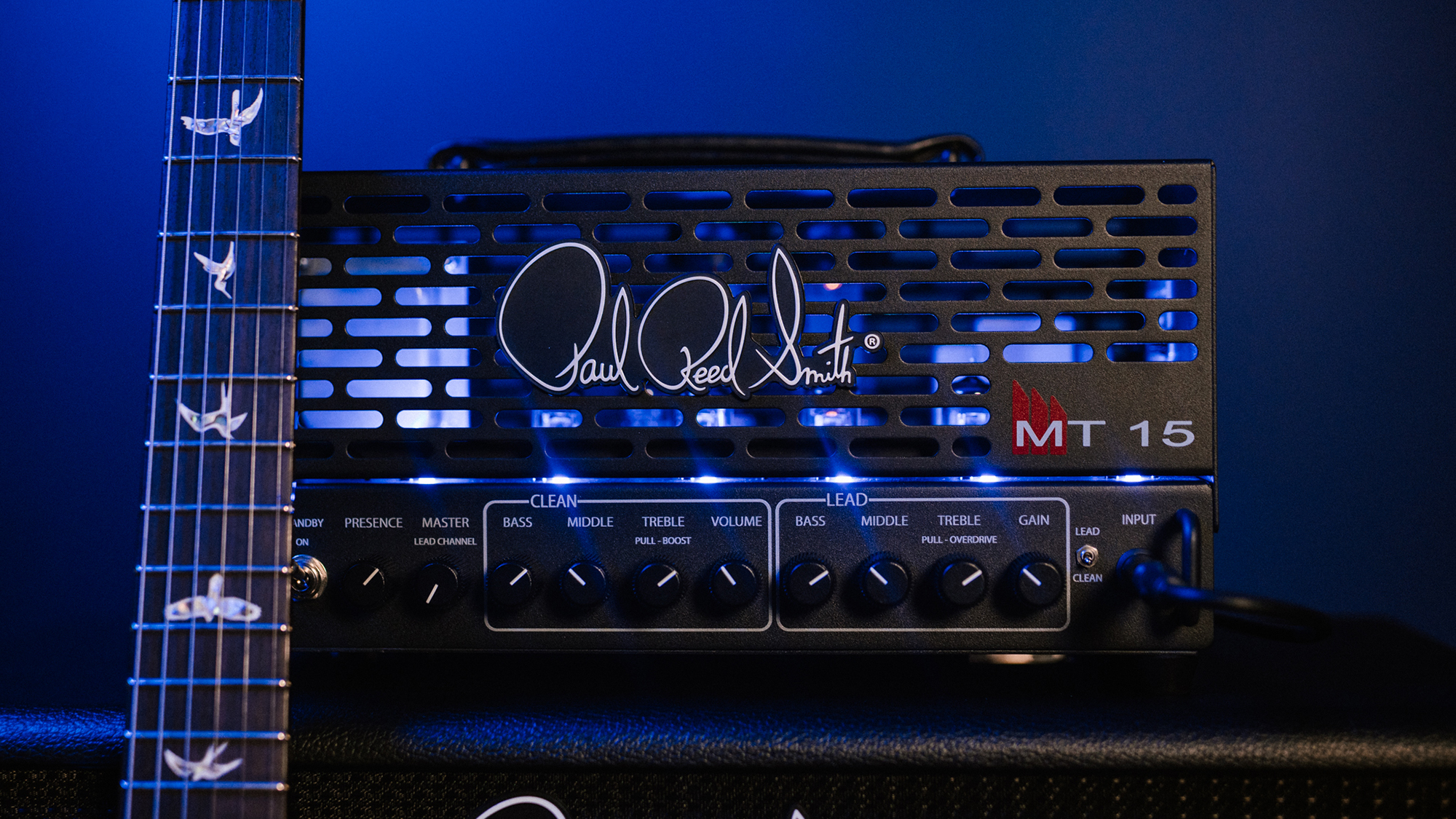Best acoustic electric guitars 2025: electro-acoustic picks for every type of player
Know your piezos from your transducers and experience the best of both worlds with models for beginners to pros and for every budget
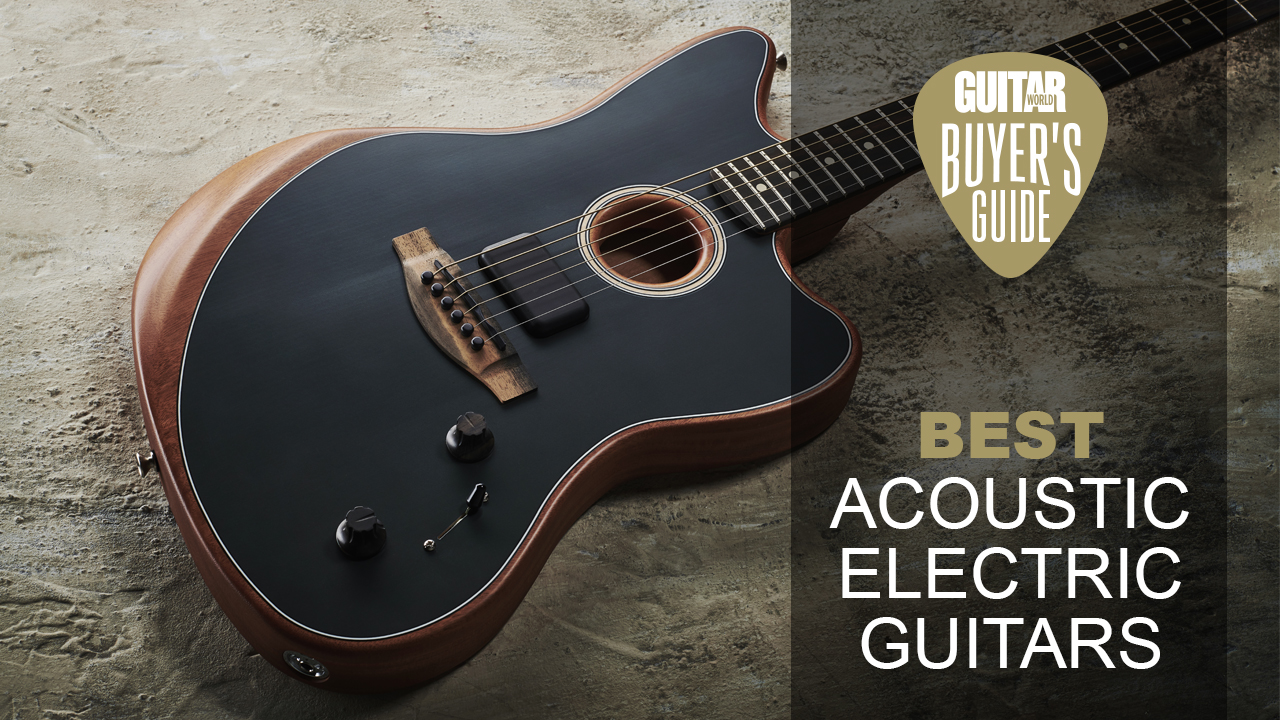
The acoustic guitar is a magical instrument with qualities that are hard to replicate, with even its electric siblings often feeling vastly tonally different. However, the reality is that sometimes the sound emanating from the body of an acoustic isn’t loud enough, which is where one of the best acoustic electric guitars can be an ideal solution.
Whether you’re looking to play live on stage at a local bar, or in front of thousands at an arena show, an acoustic electric (often referred to as an electro-acoustic) will have you covered, giving acoustic tones the additional volume they sometimes need.
Acoustic electrics come in many different styles and can even have different technology that provides the ‘electric’ element of their construction, and their pricing can vary from affordable to very expensive. Even affordable acoustic electrics can be fantastic instruments and we’ve uncovered the very best across all budgets in this list. We’ve also included some useful FAQs at the end of this guide if you’re looking for more guidance on what makes a great acoustic electric.
Our top picks
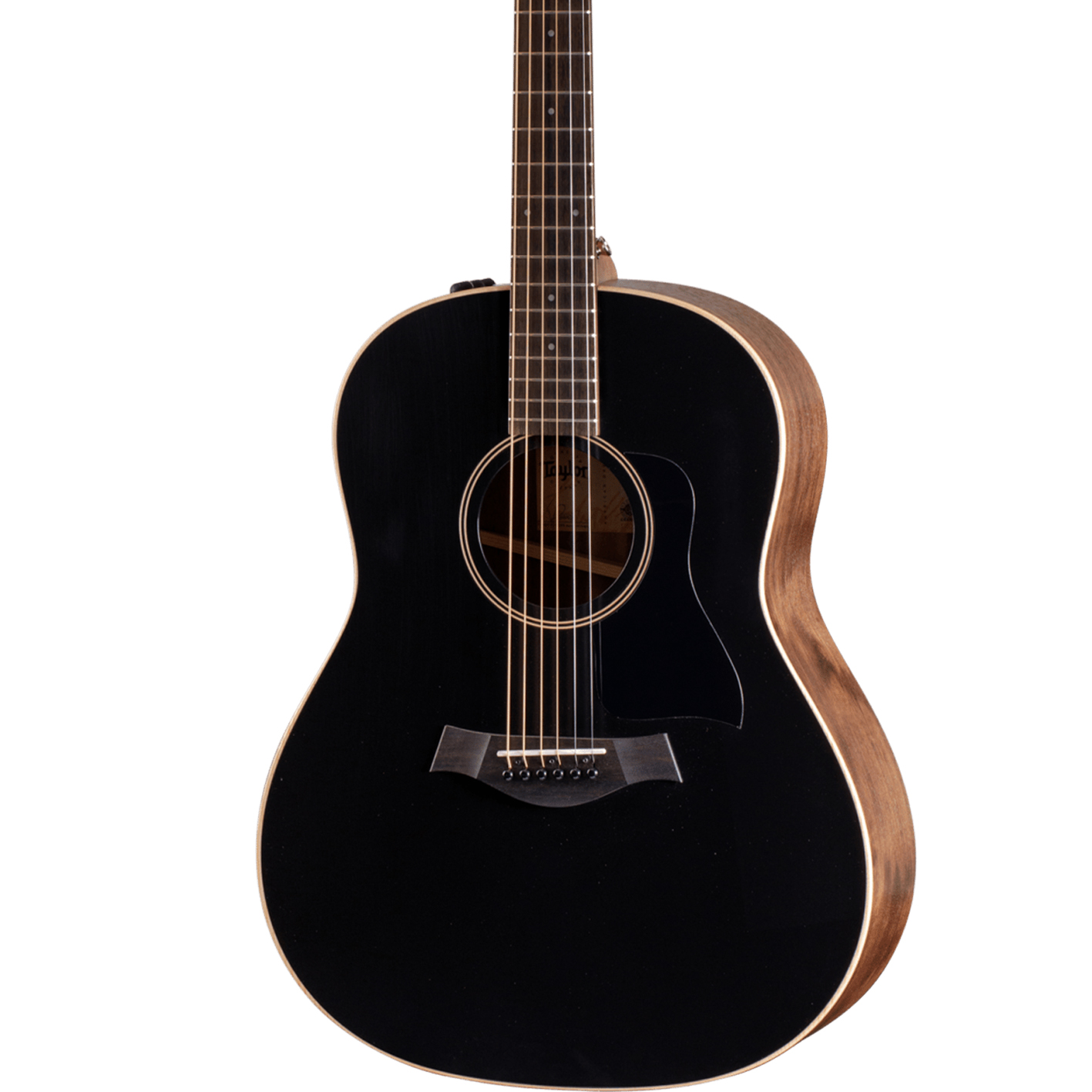
If you’ve got a little cash to spend, we love the Taylor American Dream AD17E. Taylor guitars are known for their crisp, detailed sound and this model is no different. The body shape gives you a classic dreadnought sound, with a bit of a modern twist. The ES-2 pickup system provides a lovely, organic tone when plugged in, plus their amazing V-Class bracing system gives you a ton of volume and sustain.

It’s hard to ignore the Martin DJR-10E. It strikes a balance between quality, playability, sound and affordability very nicely. It’s made from all-solid wood, comes fitted with a good pickup and it costs under $700 – for a proper Martin! It’s slightly smaller than full size too, which we found made it ideal for a range of different players.
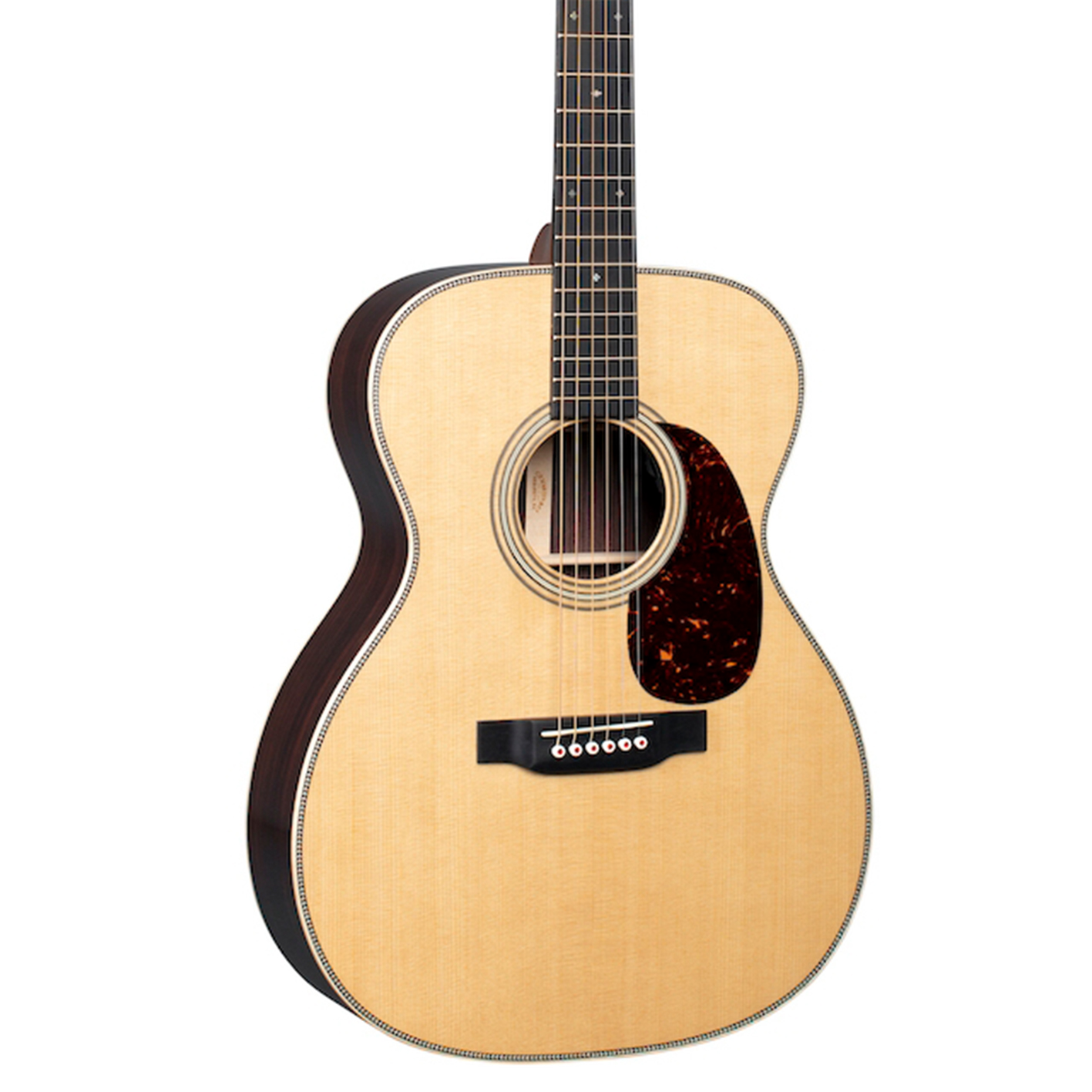
Martin’s D-28 and 000-28 are benchmark acoustic guitars that many others are measured by. But for us the latter is our go-to choice because of the comfort and intimacy the smaller, shallower body offers. This is a lighter 000 than most with a titanium truss rod for strength, but it’s also louder. It’s a supercharged 000 with the bass holding its own to the treble and remaining wonderfully touch sensitive.
Best overall
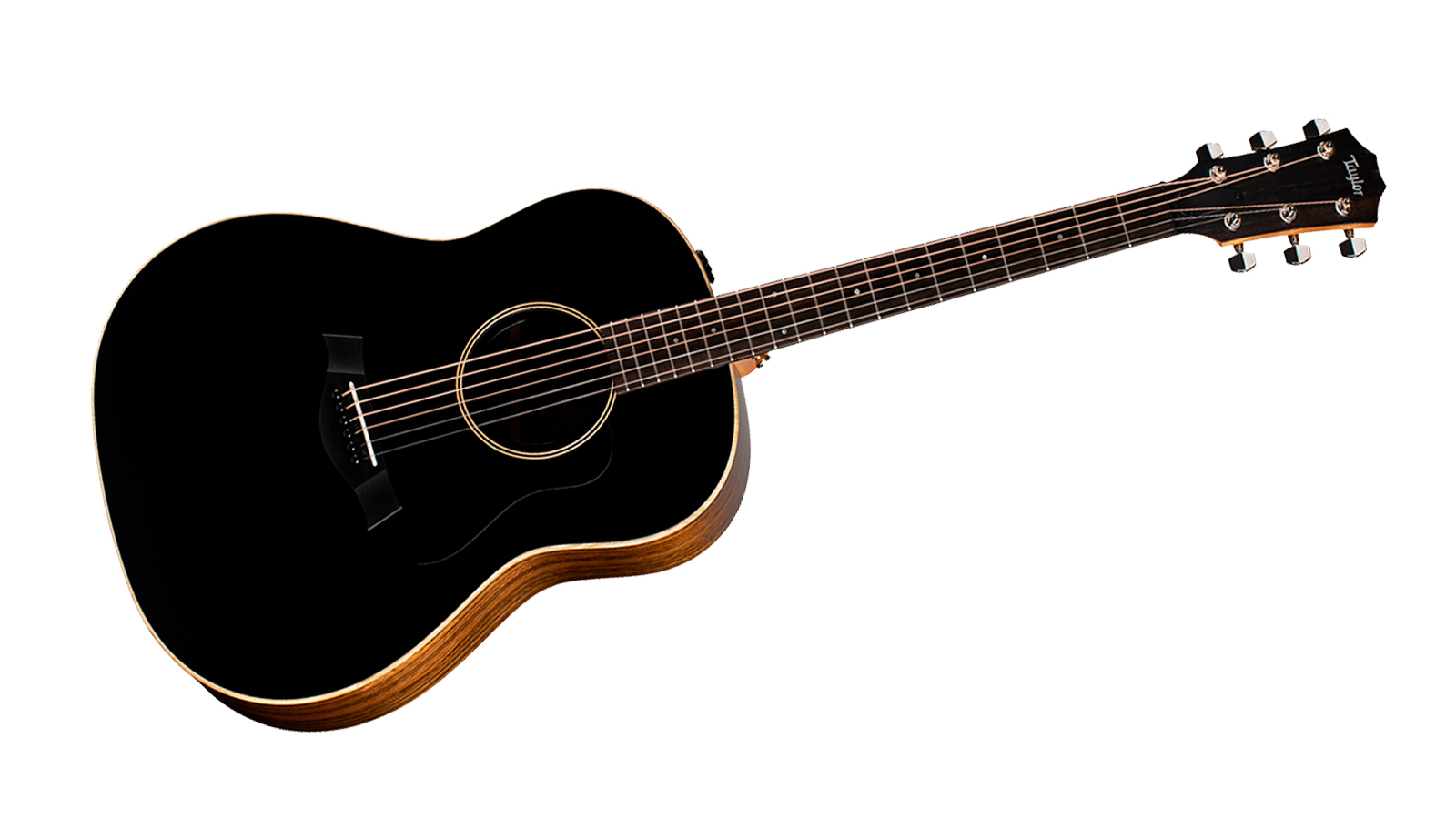
Specifications
Reasons to buy
Reasons to avoid
Taylor’s most accessibly-priced USA-made solid wood acoustic is an addictive guitar; with the company’s V-Class bracing offering stunning intonation and resonance across the fretboard, you’ll find yourself visiting the dusty end more than you’d imagine.
We love the Johnny Cash and Everly Brothers vibe of the matte black spruce top, complimented by the rich ovangkol grain of the back and sides. This Grand Pacific slope shouldered dreadnought is a pro-level guitar for life, offering tonal balance and wide frequency response that makes it a great example of dreadnought class.
It’s a woodier tonal character than players might expect from Taylor - a little Gibson J-45-esque - and the Expression System 2 does it proud.

"The Blacktop is a fabulous, head-turning instrument that plays and sounds great in a variety of musical styles. It packs personality galore, too." Read our full Taylor American Dream AD17E Blacktop review.
Best for value
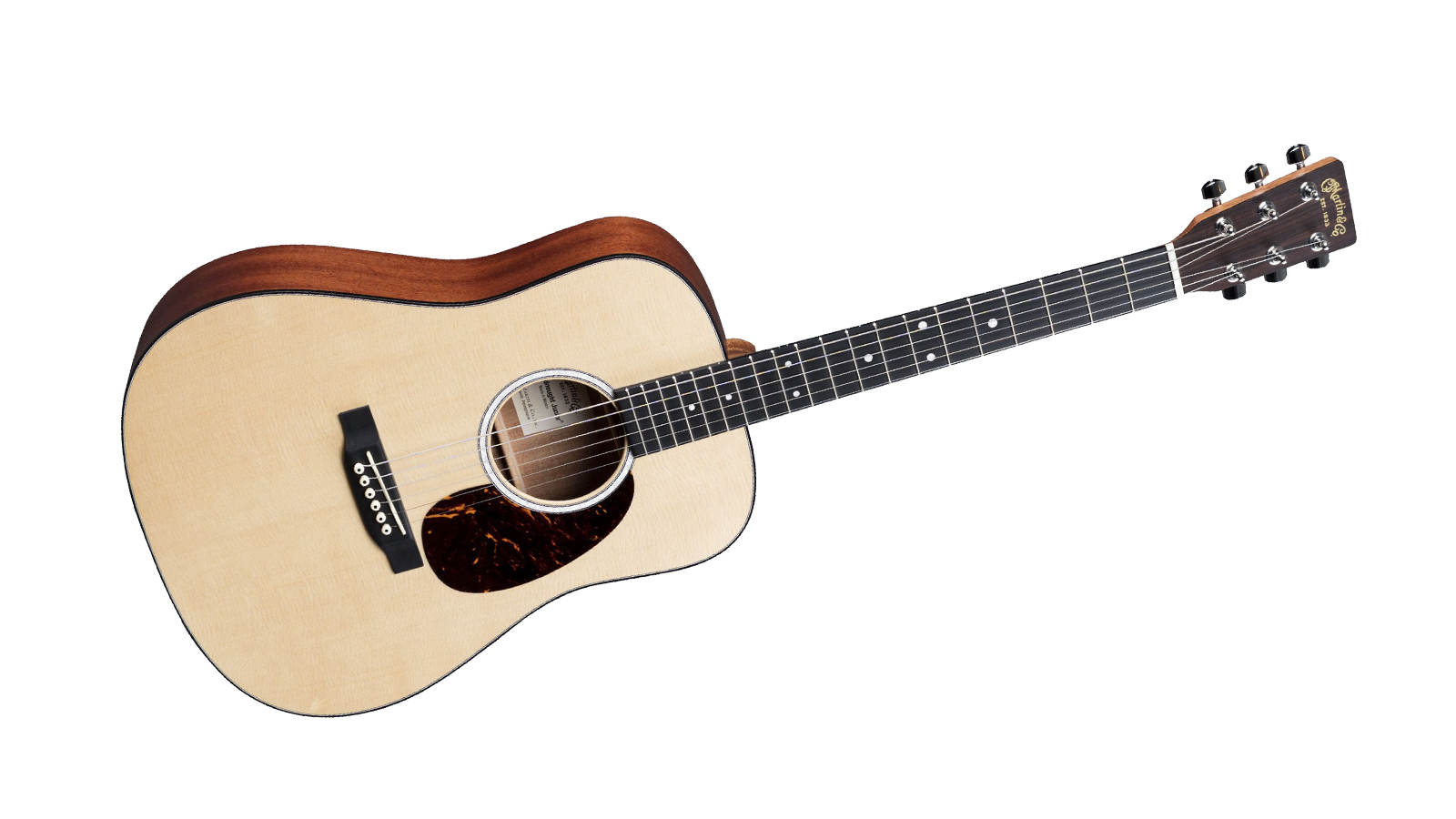
2. Martin Junior Series DJR-10E
Our expert review:
Specifications
Reasons to buy
Reasons to avoid
A solid wood Martin acoustic electric guitar under $700? For us, nothing comes close for value in the iconic company’s catalog right now. The Dreadnought Junior is just that good. It’s a smaller take on a classic Martin shape but we really like the combo of 000 body depth and shorter 24” scale length – it helps the guitar feel intimate and portable. But we found it still sounds and plays with the unmistakable Martin flair.
Martin’s consistently high build standard offers peace of mind if buying online and we’re confident that this is a guitar you’ll want to keep close – the visually low-key Fishman Sonitone system means you can take it onstage too.
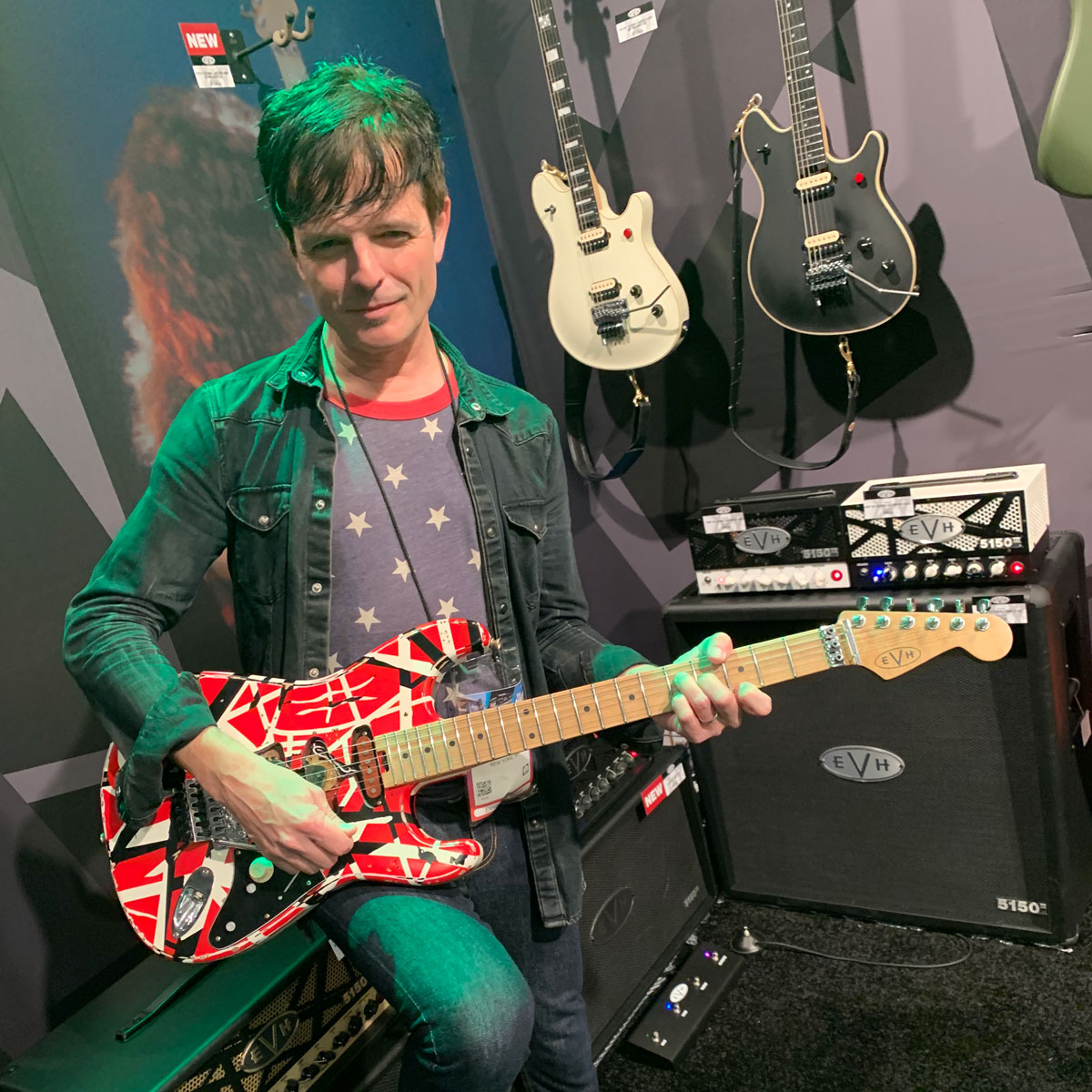
"The Martin Dreadnought Junior is an acoustic that ticks all the boxes for comfort, feel, playability, and portability, but most importantly, sound." Read our full Martin Junior Series DJR-10E review.
Best for pros
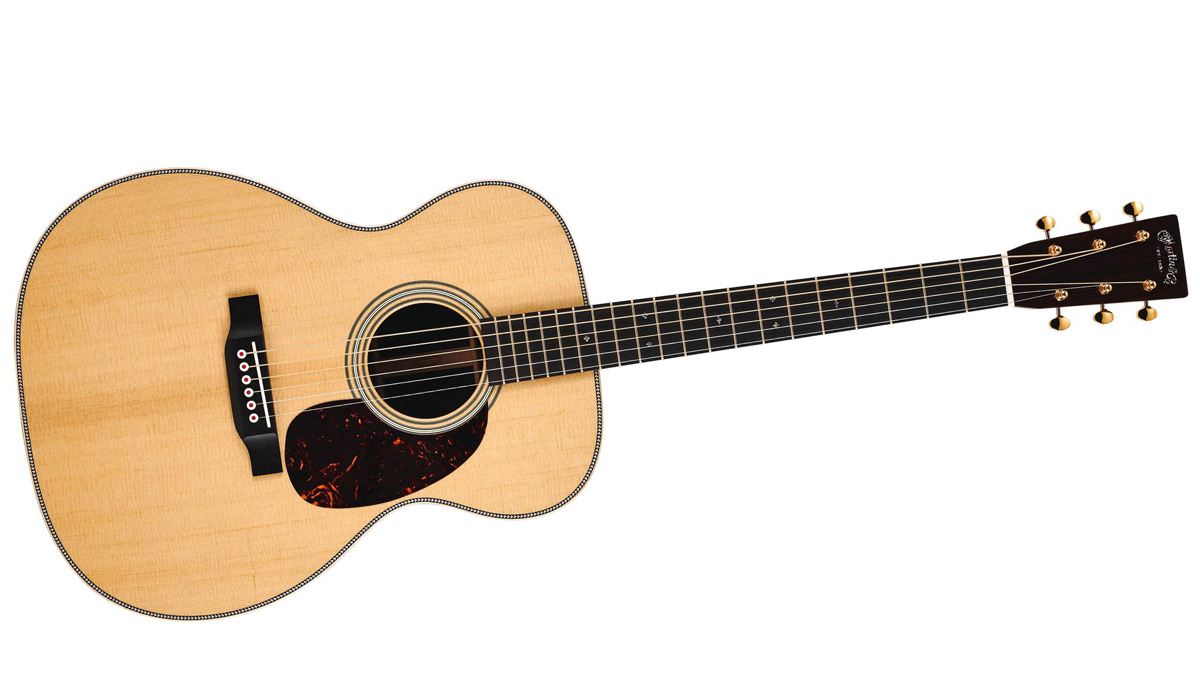
3. Martin 000-28E Modern Deluxe
Our expert review:
Specifications
Reasons to buy
Reasons to avoid
Martin’s D-28 and 000-28 are benchmark acoustic guitars that many others are measured by. But for us the latter is our go-to choice because of the comfort and intimacy the smaller, shallower body offers. And this is the premium, reworked contemporary example that was released in 2020.
The pearl logo, vintage style gold-plated open-back Waverly tuners, flamed maple wood binding and long lasting gold alloy frets all mark the Deluxe edition’s ‘sophistication meets performance’ manifesto. This is also a lighter 000 than most with a titanium truss rod for strength, but it’s also louder (aided by the carbon-fibre bridge plates, the Liquidmetal bridge pins). It’s a supercharged 000 with the bass holding its own to the treble and remaining wonderfully touch sensitive.
The top here is also given the vintage treatment thanks to Martin’s VTS torrefication process and the custom Fishman Aura VT Blend system uses sound images from miking examples of this model to blend with the pickup. The results are the best of both worlds; organic detail with some welcome pickup attack for the mix.

"Possessing a clear harmonic range, ultramodern features, and vintage-style appointments, the Martin 000-28 Modern Deluxe is by far one of the most responsive and satisfying acoustics available." Read our full Martin 000-28E Modern Deluxe review.
Best hybrid
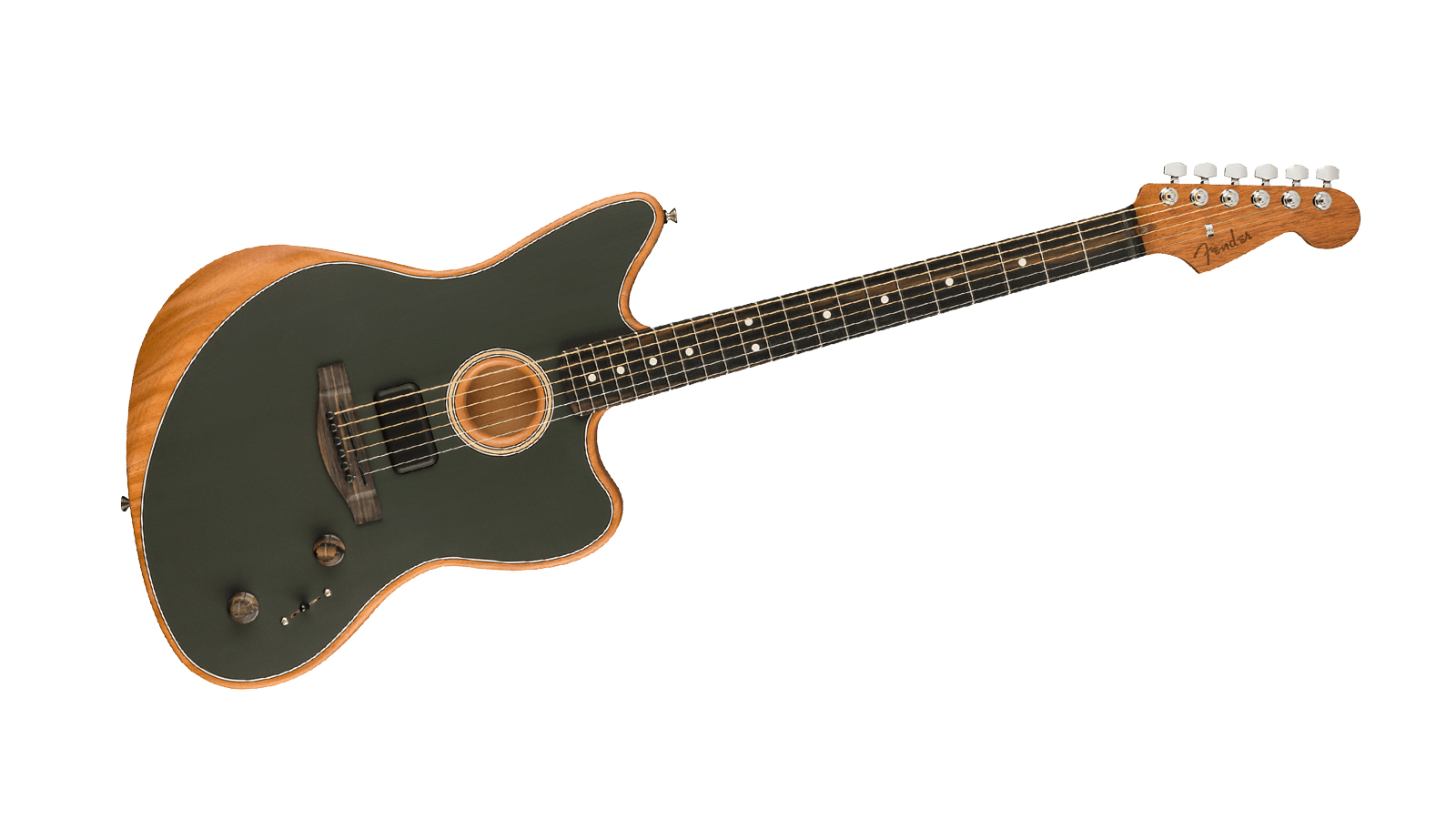
Specifications
Reasons to buy
Reasons to avoid
Fender’s Acoustasonic series began with a Strat, then a Tele but we think this Jazzmaster is the best example yet. But isn’t it an electric guitar? Yes and no, we’d say it falls a little more on the acoustic side of sound. The hook here is it plays like an electric, but it’s soundhole means you can strum it unplugged for a parlor-esque sound. But plug in and things get really interesting…
There’s five positions, each with A and B voices that can be blended to suit and three different pickup sources for an ‘Acoustic Engine’ to generate them; a magnetic Shawbucker that can cover a wide range of tones, then a transducer and body sensor that help to recreate the sounds of various different size acoustic guitars. And the result is an incredibly effective stage guitar.

"The Acoustasonic is once more validated by the sheer breadth and quality of the acoustic sounds and electric voices on offer. This is a true hybrid acoustic-electric guitar that blurs the lines in the most musically inspiring ways." Read our full Fender Acoustasonic Jazzmaster review.
Best budget
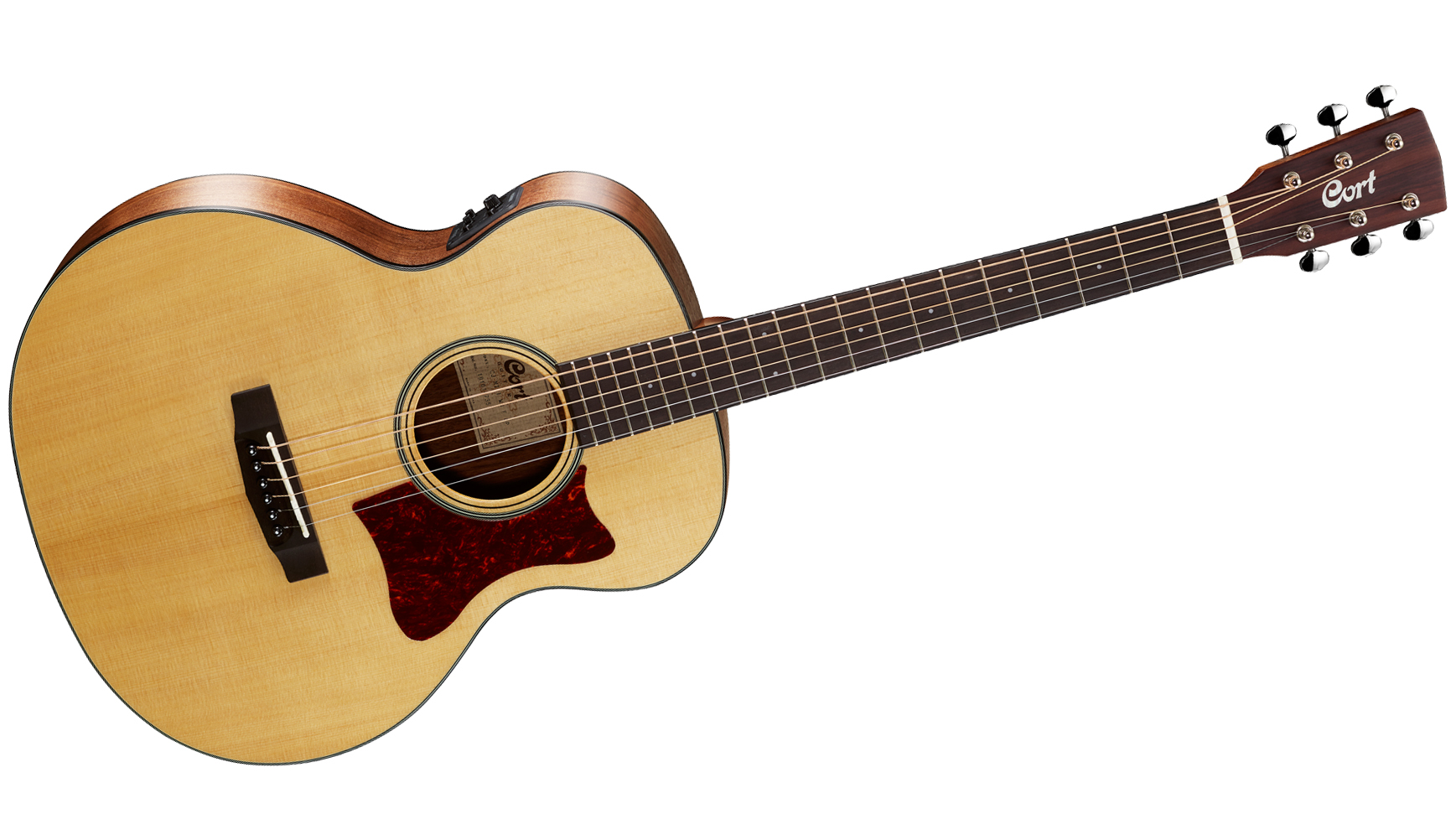
5. Cort Little CJ Walnut OP
Our expert review:
Specifications
Reasons to buy
Reasons to avoid
Cort has built a formidable reputation for value and the Little CJ is a prime example; immensely playable and appealing, it’s also no slouch when it comes to plugging in either.
Right now we’re seeing street prices in the US under $450, making it a very attractive option for anyone looking for a travel electro acoustic. We found the mahogany neck with ovangkol fingerboard fast with the low action, and though its smaller size won’t deliver boomy bass it offers punchy mid range and lively highs.
Its Fishman Presys II transfers its strengths well through an amp or PA, making the Little CJ sound like a larger proposition, especially with an onboard bass and treble EQ to dial in.

"The Little CJ is one of the very best value travel acoustics on the market right now. There’s a lot of different players who would enjoy this; from younger starters, to electric players cautiously eyeing an acoustic purchase." Read the full Cort Little CJ Walnut OP review.
Best parlor
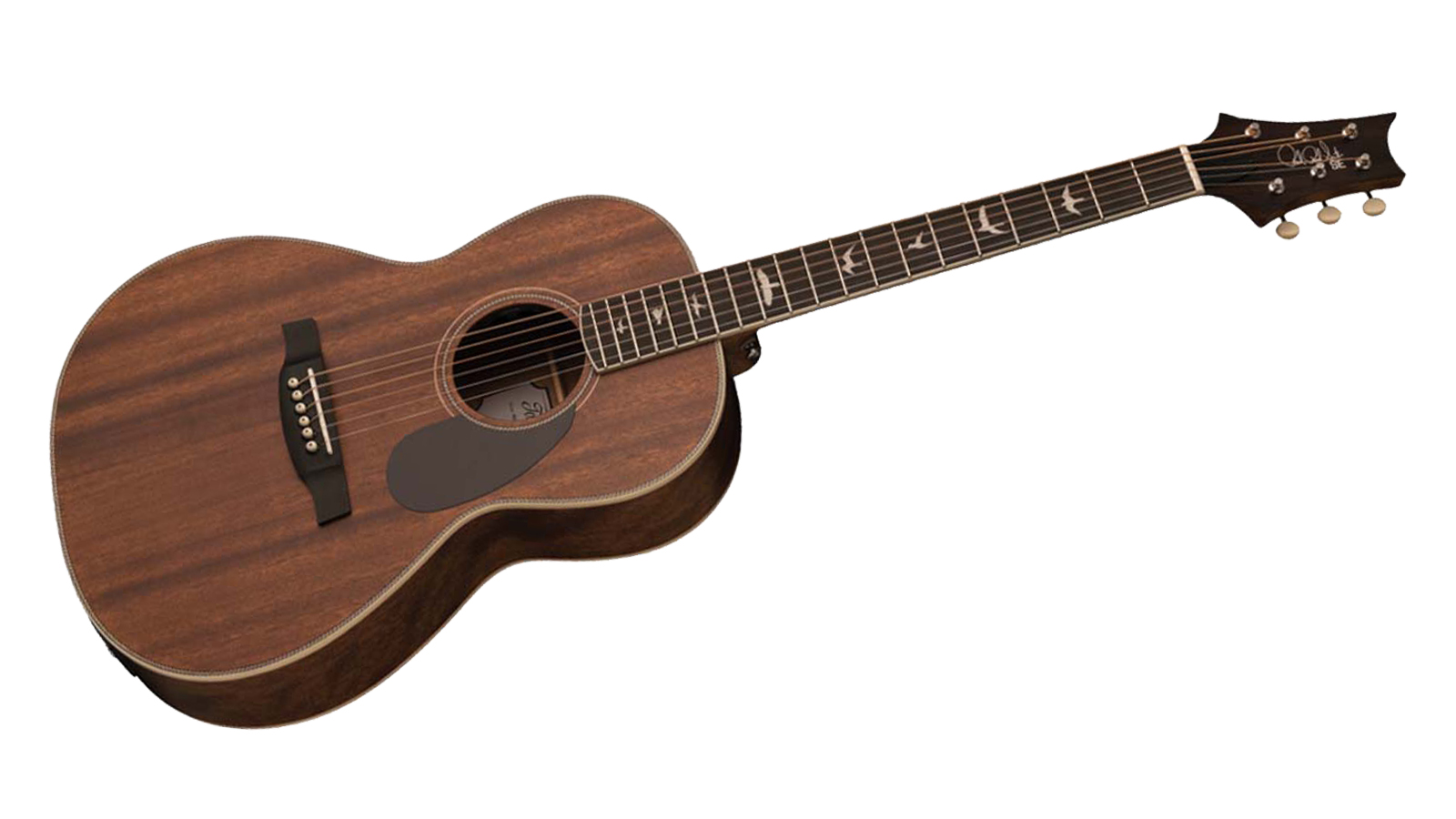
6. PRS Parlor SE P20E
Our expert review:
Specifications
Reasons to buy
Reasons to avoid
A parlor-size acoustic model was a surprise from PRS in 2020, as was a small body shape that will always conjure a 1930s aesthetic. But the company’s take on tradition is another testament to the build standard and flair PRS brings to the SE catalogue.
We like the understated satin finish here and the finish options of Vintage Mahogany, Black Top and Tobacco Sunburst are all appealing, coupled with classic herringbone binding and ivory butterbean tuner buttons on the unmistakable PRS headstock.
PRS SEs are up there with the best in terms of consistent factory finish quality in the middle of the market and this adds to that reputation. The hybrid of classical and X bracing, bone nut and saddle with Wide Fat neck are also a smart combo for getting enhanced projection from this light and compact guitar. It’s great for blues, fingerstyle and singer/songwriter inspiration. The Sonicore-based Fishman GT1 also offers simple but effective electro features at this pricepoint.

"Boasting clean lines from top to bottom, comfortable playability, and a sweetly sonorous voice, the PRS SE Tonare P20E is one of the finest budget-minded parlor guitars." Read our full PRS Parlor SE P20E review.
Best dreadnought
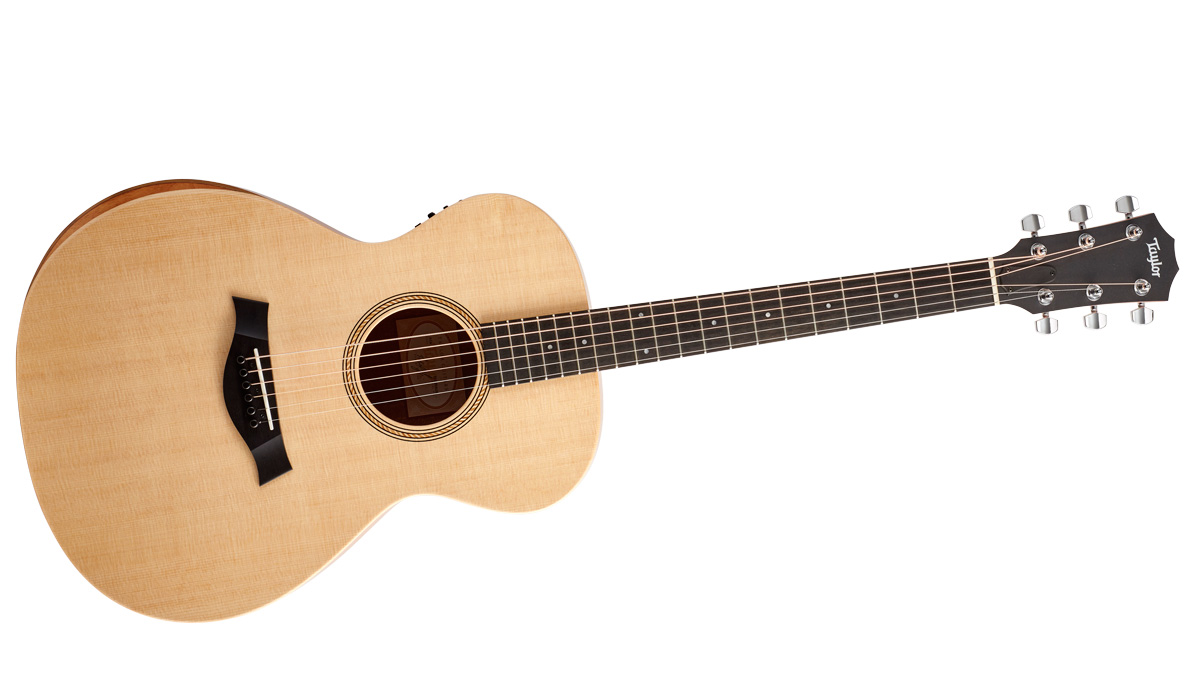
7. Taylor Academy Series 12e
Our expert review:
Specifications
Reasons to buy
Reasons to avoid
Although this is an entry-level price for a Taylor electro acoustic guitar, it’s more expensive than much of the competition when it comes to ideal beginner guitars. But we believe for playability, comfort and performance it is the best, and a guitar that will go the distance with any guitar player.
Taylor designed it that way; a slim profile neck, shorter-scale, low action and an arm rest creates accessibility for all. And we’ve chosen the smaller Grand Concert body over the 10e dreadnought with that in mind. Taylor’s superb onboard ES-B electronics mean it can stay with you for the vital step up to live performance, should you wish.

"The Taylor Academy Series guitars may have “plain Jane” appearance, but guitarists of all levels of experience will find it hard not to fall in love with their sexy sound quality, comfortable playability, and impressive electronics." Read our full Taylor Academy Series 12e review.
Best 12-string
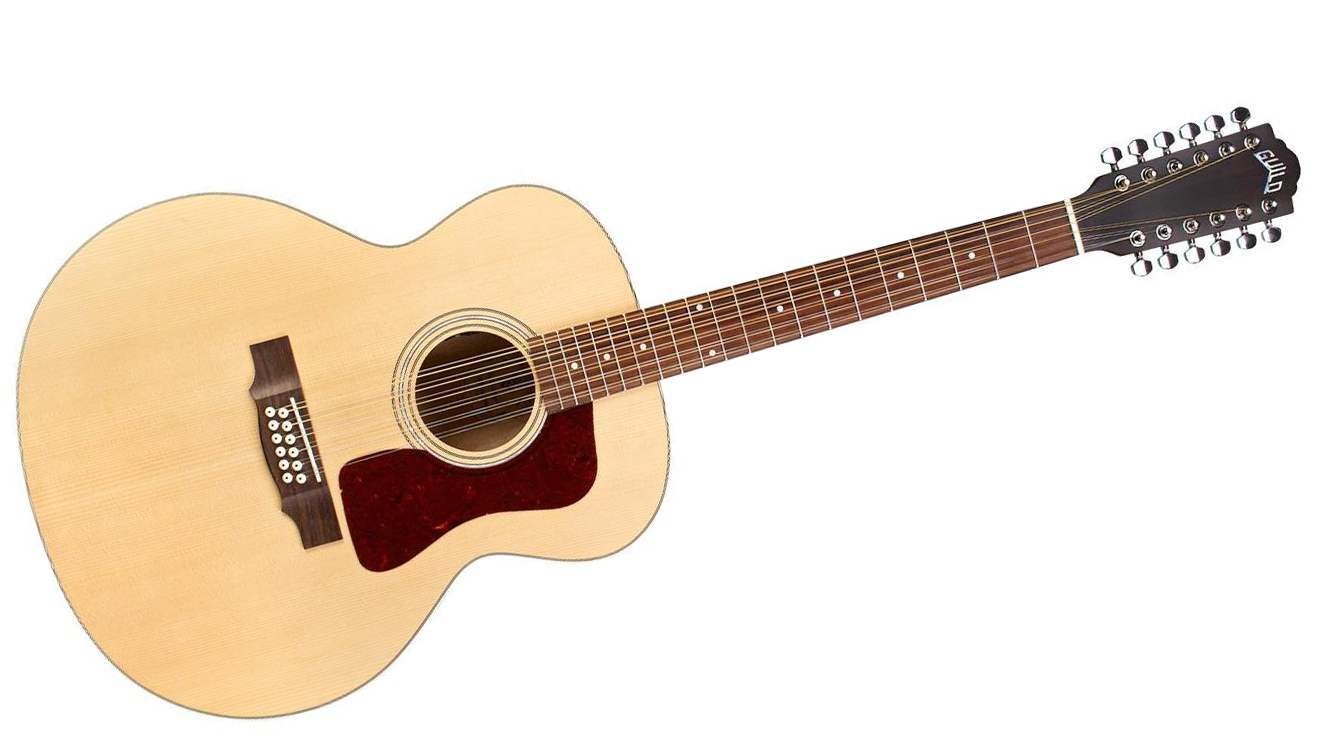
8. Guild F-2512E Archback 12-string
Our expert review:
Specifications
Reasons to buy
Reasons to avoid
Guild has a long history when it comes to 12-string jumbo acoustics – right back to the 1960s. The F-2512E combines that experience with contemporary manufacturing. Nothing compares to the rich sound of a 12-string acoustic but it’s not an everyday acoustic guitar for most, so the lower entry price here is important.
The arched back design helps the projection of the shimmering out-of-phase sounds you’ll get here, and a bone nut and saddles are welcome for their contribution to sustain on a more affordable model.
The electronics here are pretty basic - based on the Fishman Sonitone design with volume and tone (the latter a treble rolloff) controls placed just inside the soundhole.
Best preamp
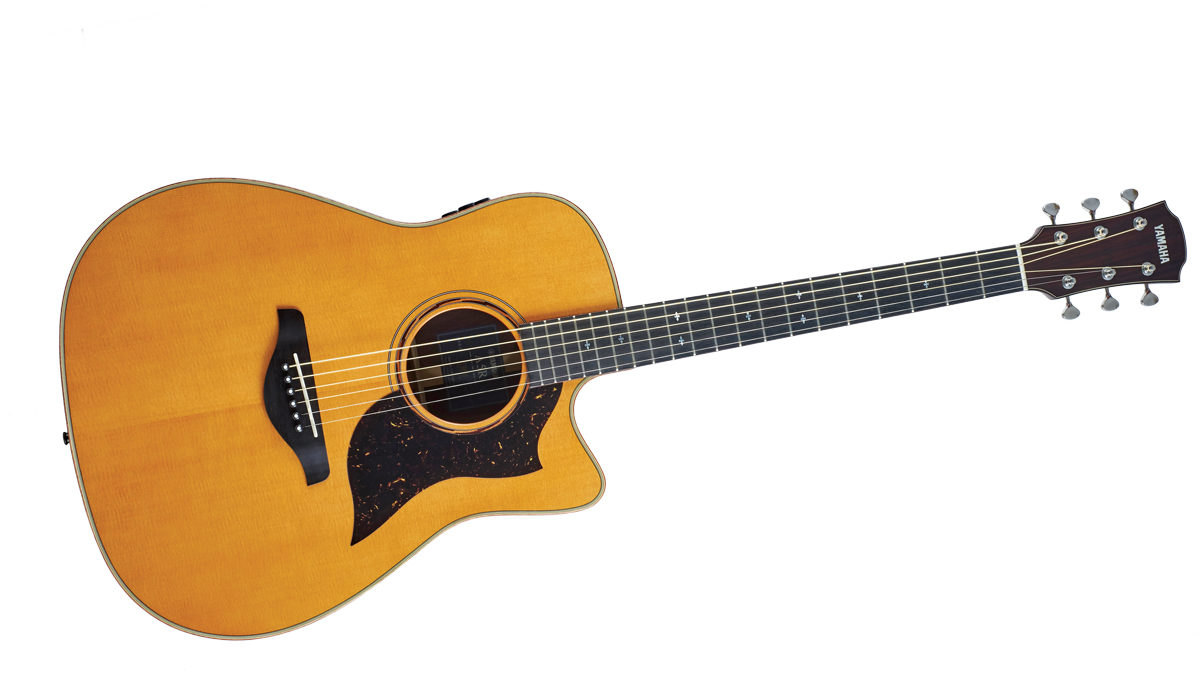
9. Yamaha A5R ARE
Our expert review:
Specifications
Reasons to buy
Reasons to avoid
The A5R is a great acoustic before we even get to the electric side of things. The ARE torrefied spruce top has a vintage aesthetic and with solid rosewood back and sides alongside scalloped bracing delivers a classic full-bodied dreadnought sound with cutaway access.
The SRT2 system complements the timeless quality with a cutting edge preamp; allowing players to blend the under-bridge piezo with character of the classic Neumann U 67 large-diaphragm condenser or a Royer R-122 active ribbon microphone. It works very well indeed to deliver sounds that cut through while retaining organic acoustic character.
Best jumbo
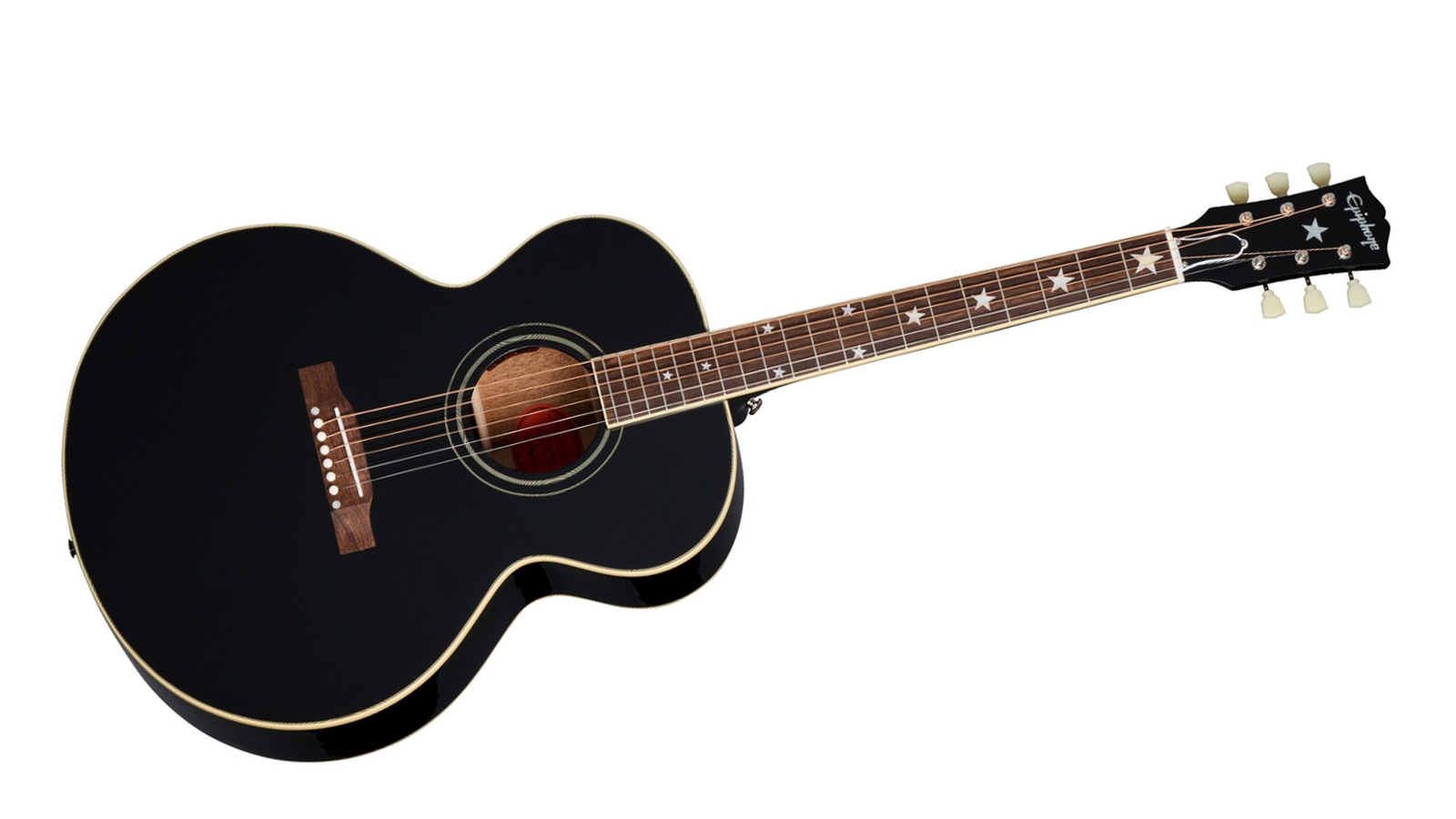
10. Epiphone Inspired By Gibson J-180 LS
Our expert review:
Specifications
Reasons to buy
Reasons to avoid
A more recent offering from Epiphone, this is inspired by Gibson’s Custom models and showcases a raft of incredible features.
First up, it has a thermally aged solid spruce top which helps the guitar sound like it has been properly played in, so straight out of the box it’s rich and resonant with lots of nice overtones. This is paired with solid mahogany back and sides which give it a lush, full low end.
The shape is sort of like a mini jumbo – it projects really well and sounds wonderfully balanced, but it’s also comfortable to play for a wide range of different players, regardless of size. The Epiphone J180-LS is fitted with a really good LR Baggs VTC under-saddle pickup and preamp system. This ensures that your acoustic sounds big and full, with minimal ‘piezo quack’ when you plug it in.
FAQs
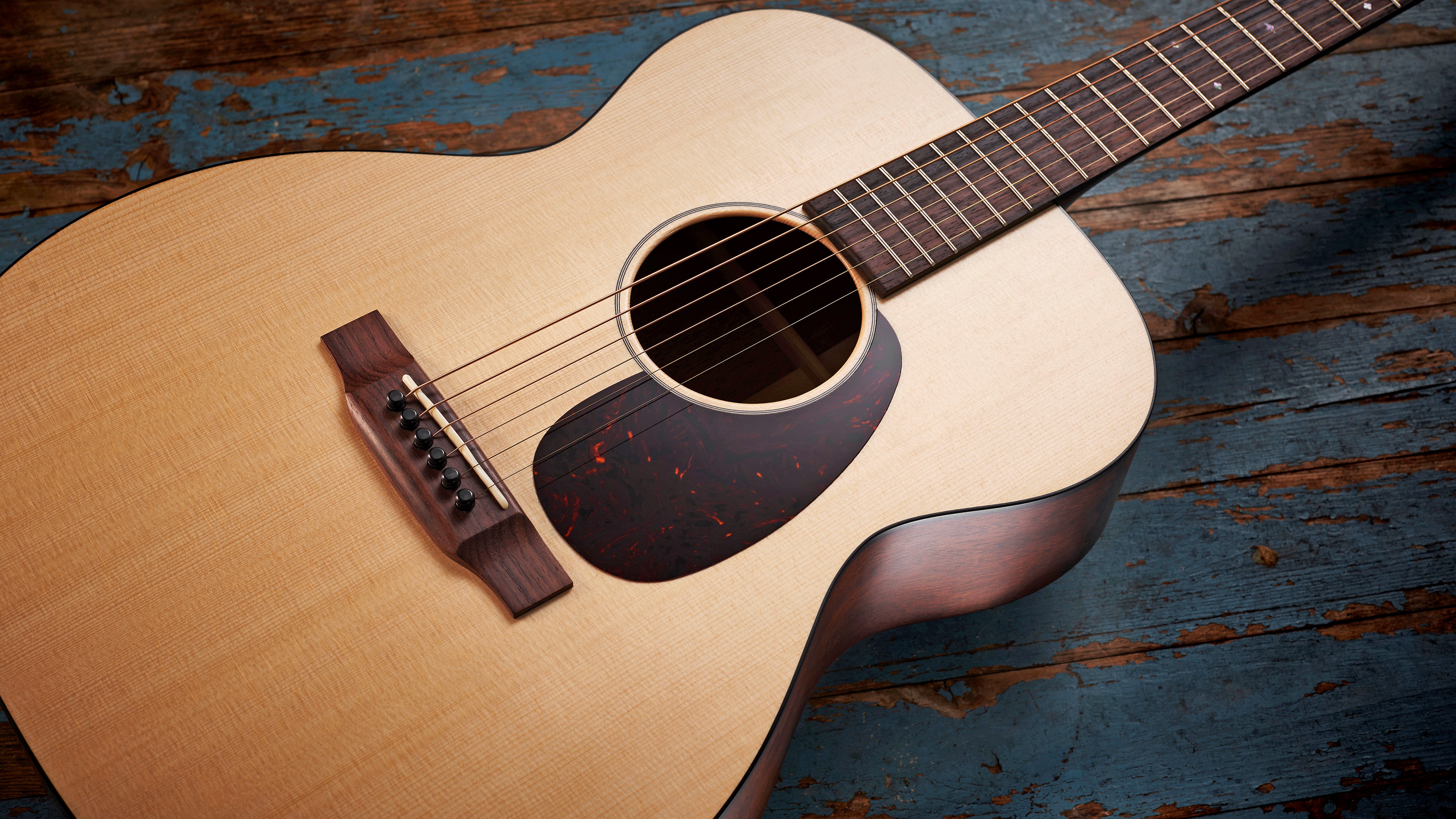
Why do I need an acoustic electric guitar?
An acoustic electric is pretty much a necessity if you plan on playing live in any venue larger than a small room. While big-body acoustic guitars can produce admirable volume, it doesn’t take much for their sound to be lost, and the ability to electrify your guitar to go through an amplified speaker system is invaluable when seeking big volume.
The alternative to an acoustic electric guitar would be a “normal” acoustic and an external microphone. This is a great-sounding solution, but it’s far less convenient than an acoustic electric, particularly in the live environment, and comes with a number of potential issues, such as microphone positioning, picking up noise from other instruments or the audience, and producing feedback. The acoustic electric is a far simpler option.
What are the different types of acoustic guitar pickup?
There are a number of different types of pickup that you’ll find on an acoustic electric guitar. The most popular type is an undersaddle piezo pickup. They come in the form of a thin strip that sits underneath the saddle. When the guitar is played, the vibrations from the strings are detected by this sensitive undersaddle pickup and fed to a preamp that boosts the signal. Here, you can usually dial in some sort of EQ too. That information is then passed on to an amplifier or PA system.
Generally, piezo pickups all sound quite similar. The guitar itself does make a difference to its amplified sound, as the wood combination and body shape etc all contribute to how the strings vibrate in the first place. Piezos are usually quite bright and direct sounding, with some compression. EQ on the preamp can really help, as it will on whatever amplification unit you’re using.
Transducer pickups work in a similar fashion in that they work off the vibrations caused by the strings, and in turn, the body of the guitar. They can be placed anywhere, but popular places include somewhere on the underside of the bridge, or on the body somewhere.
Some of the best acoustic electric guitars might feature a mic blend system. As the name suggests, it’s a blend of a microphone and something else – often a piezo. Having a small microphone placed within the body of the guitar can capture some of the more natural, organic tones created by the instrument. It’s usually not quite a strong enough signal on its own, but blended with something like a piezo, it can sound great. You can get the attack and the brightness of the piezo mixed with a more ‘in the room’ acoustic sound.
What do I need to know about preamps?
An acoustic-electric preamp is a system that boosts the signal of your pickup, as acoustic-electric pickups can produce very low signals, particularly piezo pickups. This needs boosting to a line level signal before it reaches an amp or PA system. Otherwise, colossal amounts of gain would need to be used, which will introduce noise into your sound and become a feedback disaster. Acoustic-electric preamps typically require a 9V battery to run, so always keep a fresh one on hand when you hit the road!
Acoustic electric guitar preamps will often have some kind of EQ system, which can help balance your sound and reduce resonant frequencies that cause feedback. And some preamp systems will have specific notch filters that when engaged cut the frequencies that often lead to feedback.
These preamps may also include a tuner, which is always useful, and some can even have effects built in, such as chorus and reverb, though external effects pedals will give you more control over these types of effects.
What’s the difference between solid and laminate woods?
If you see the words ‘solid’ or ‘laminate’ in reference to an acoustic guitar, it will refer to the construction of the body, and the same is true of acoustic electrics. Typically, a solid body acoustic will be more expensive as they are more expensive to construct, and the costs are passed on to the consumer.
Solid body guitars are made from whole (or solid) pieces of wood, which are understood to have more resonant qualities. Laminate body guitars are instead made with a composite material of multiple different layers of wood glued together. This is a cheaper process than sourcing solid woods, but it does leave you with a less resonant instrument.
One benefit of laminate acoustic electrics is that they are less susceptible to changes in humidity than solid body guitars, so if you’re touring all over the world in a variety of environments, a laminate could be a preferable option.
It’s not uncommon to see guitars with a solid top and laminate back and sides, which helps keep costs down but retains some of the tonal benefits and good looks of solid wood.
Bear in mind when picking an acoustic electric, there will be times where you will want to play it unplugged, so its natural acoustic tone is just as important as its amplified tone, and much of that will come from its construction.
Why trust Guitar World?
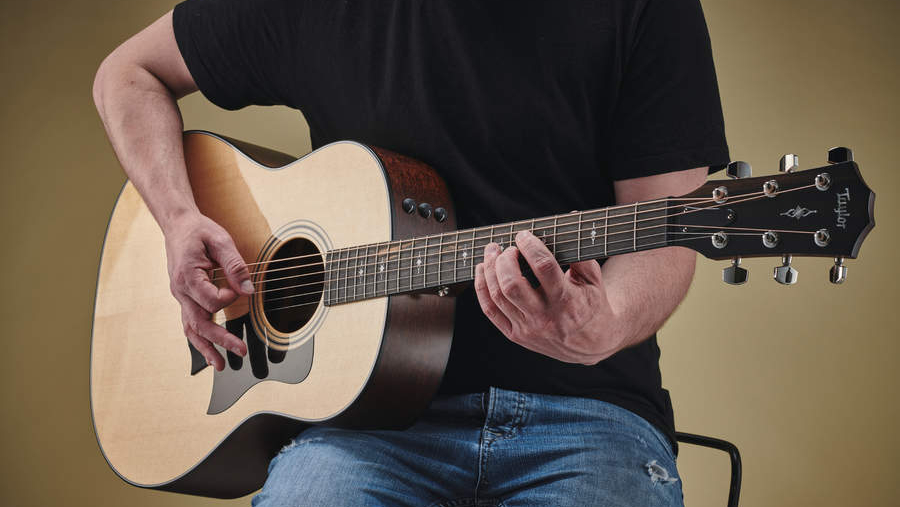
☑️ A global audience of 3.8 million guitarists monthly
☑️ 1,200+ reviews on GuitarWorld.com
☑️ 30+ years of product testing at Guitar World
Guitar World boasts over 44 years of expertise and stands as the ultimate authority on all things related to guitars. The magazine and website feature expertly written gear round-ups and top-quality, authoritative reviews penned by a team of highly experienced industry professionals.
Guitar World's inaugural print issue hit the shelves in July 1980, and ever since, it has been captivating players and enthusiasts with engaging lessons, insightful interviews with the biggest guitar heroes, and priceless buying advice for newbie players.
Furthermore, GuitarWorld.com continues this legacy online and serves as the hub of the world's foremost authorities on guitar playing. The site not only hosts content from Guitar World but also showcases articles from respected publications such as Guitarist, Total Guitar, Guitar Techniques, and Bass Player. With a reach extending to 3.8 million players each month, GuitarWorld.com is a go-to destination for guitar fanatics globally.
Below, you'll find more information about the expert authors of this guide.

Rob is the Reviews Editor for GuitarWorld.com and MusicRadar guitars, so spends most of his waking hours (and beyond) thinking about and trying the latest gear, while making sure our reviews team is giving you thorough and honest tests of it. He's worked for guitar mags and sites as a writer and editor for nearly 20 years but still winces at the thought of restringing anything with a Floyd Rose.

After spending a decade in music retail, I’m now a freelance writer for Guitar World, MusicRadar, Guitar Player and Reverb, specialising in electric and acoustic guitars, bass, and almost anything else you can make a tune with. When my head’s not buried in the best of modern and vintage gear, I run a small company helping musicians with songwriting, production and performance, and I play bass in an alt-rock band.
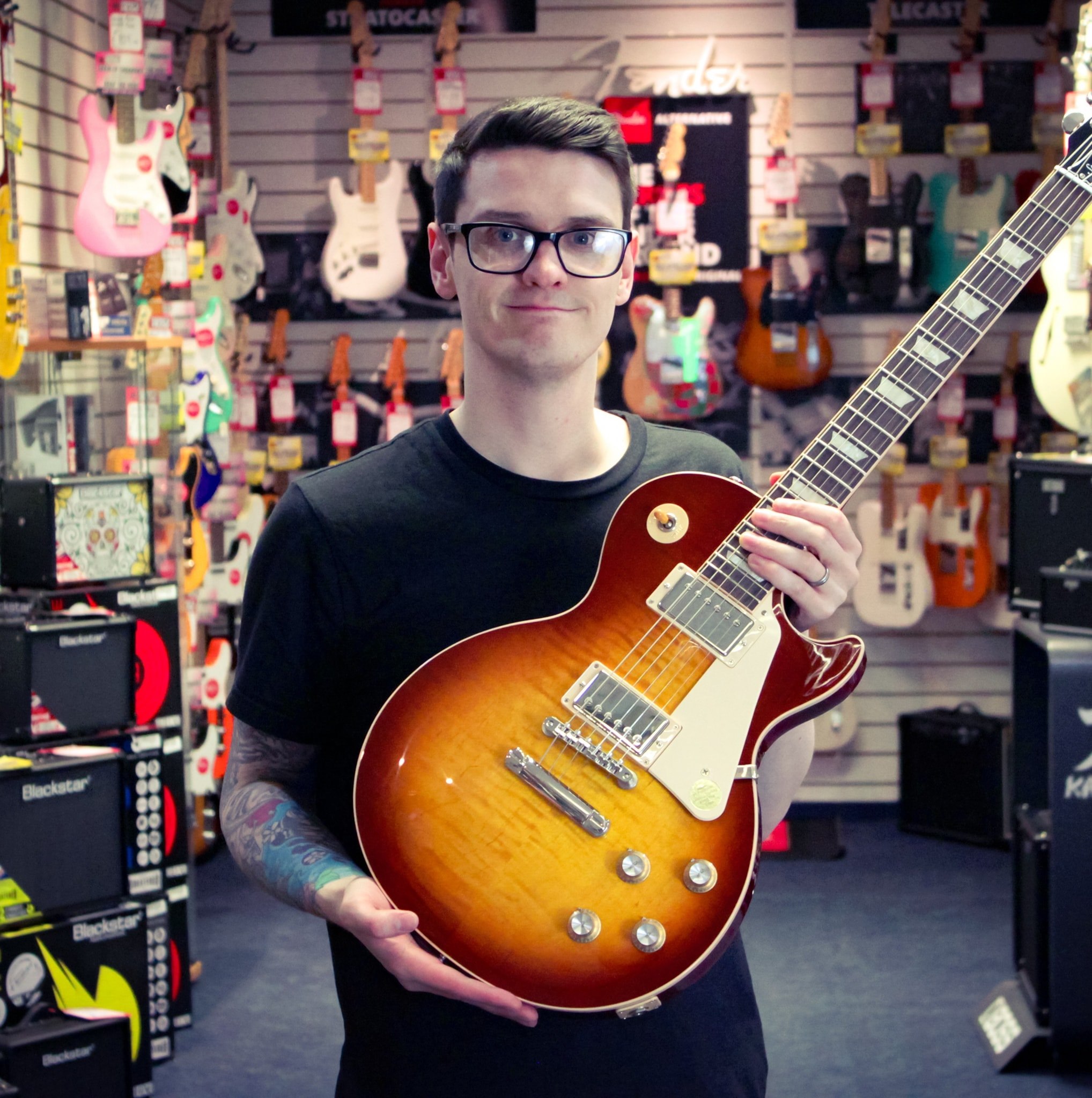
I'm Guitar World's Senior Deals Writer. In this role I create and maintain the 200+ buyer's guides you'll find on the site, find the best deals on guitar products for our readers, and test the latest gear. My reviews have been featured in prominent publications including Total Guitar, Future Music magazine and MusicRadar.com.
During my career, I have been lucky enough to talk to many of my musical heroes, having interviewed Slash and members of The Offspring, Foo Fighters, Sum 41, Thrice, and more. Prior to joining the Guitar World team, I worked in music retail, at Kenney's Music in Dundee, Scotland. For a decade, I advised everyone from absolute beginners to seasoned pros on the ultimate gear for their needs, from beginner acoustic guitars, to top-end modelers.

Connor is a contributor to Guitar World and MusicRadar. Having been a guitarist since the age of 10, he's played bass and guitar in bands across the South West of England. He has a background in audio engineering, having worked in some of the UK’s best studios including Rockfield and Invada, and has a passion for recording guitar. He is always keen to discover the greatest gear for capturing tone, be that microphones, audio interfaces or cab simulators.
How we test products

Here at Guitar World, we are experts in our field, with many years of playing and product testing between us. We live and breathe everything guitar related, and we draw on this knowledge and experience of using products in live, recording and rehearsal scenarios when selecting the products for our guides.
When choosing what we believe to be the best acoustic electric guitars available right now, we combine our hands-on experience, user reviews and engage in lengthy discussions with our editorial colleagues to reach a consensus about the top products in any given category.
First and foremost, we are guitar players, and we want other guitarists to find the right product for them. So we take into careful consideration everything from budget to feature set, ease of use and durability to come up with a list of what we can proudly say are the best right now.
Find out more about how we make our recommendations and how we test each of the products in our buyer's guides.
Related buyer's guides
You can trust Guitar World
- Best acoustic guitar amps: let your acoustic guitar tone shine
- Downsize with the best 3/4 acoustic guitars
- Best guitar cables: instrument cables for electric, acoustic and bass
- Explore our pick of the best high-end classical and nylon-string guitars
- Looking to spend as little as possible? Check out the best cheap acoustic guitars
- Up your picking game with the best acoustic guitar picks
Get The Pick Newsletter
All the latest guitar news, interviews, lessons, reviews, deals and more, direct to your inbox!

Rob has 20 years of experience writing, reviewing and editing for guitar magazines and websites, including Guitarist and Total Guitar. He's now the Reviews Editor for GuitarWorld.com and MusicRadar guitars, heading up our in-house reviews team to give you in-depth and honest tests of the latest guitar gear. He eats and dreams reviews.
- Richard Blenkinsop
- Connor Godfrey
- Daryl RobertsonSenior Deals Writer
“For years, the only 12-string acoustics I got my hands on, the necks always pulled off after a bit. I earned a lot of money replacing them!” Why one of the UK’s most prolific luthiers is a bolt-on acoustic die-hard
“While the odd corner has clearly been cut, these are true Gibsons with all the individuality that this brand exhibits”: Gibson J-45 Special and Hummingbird Special review










